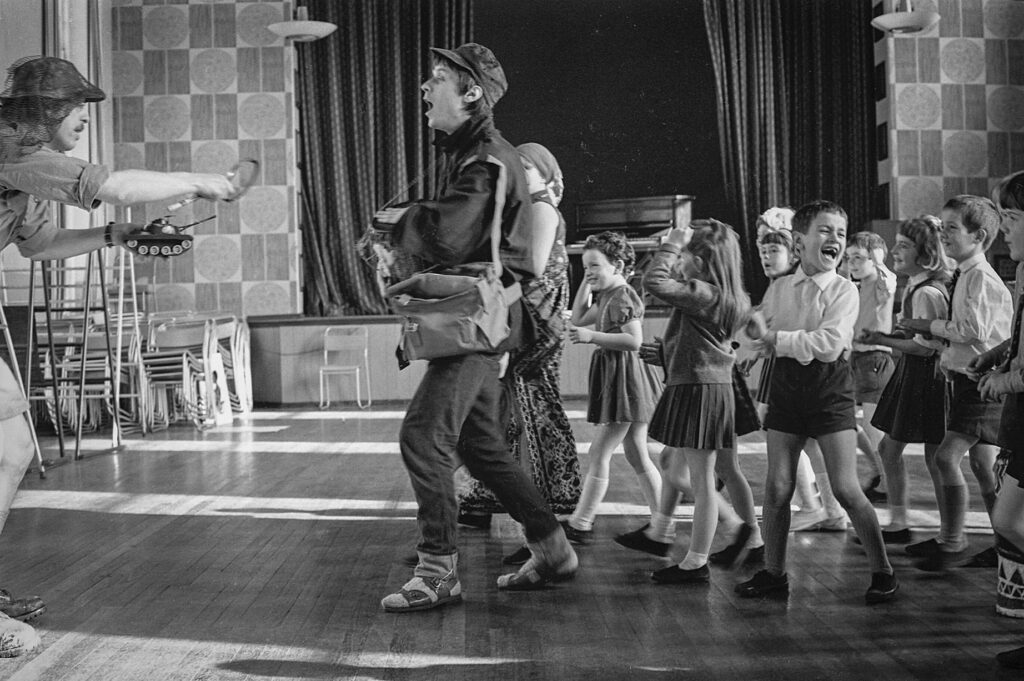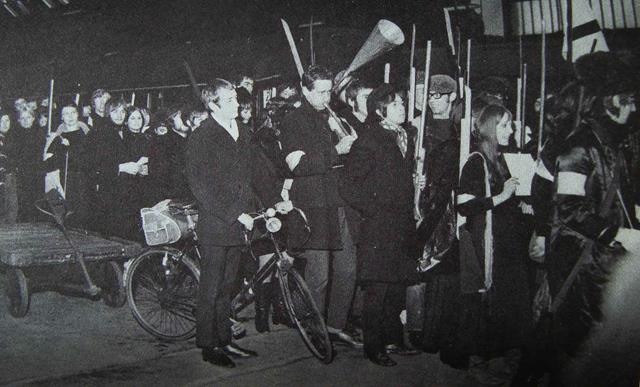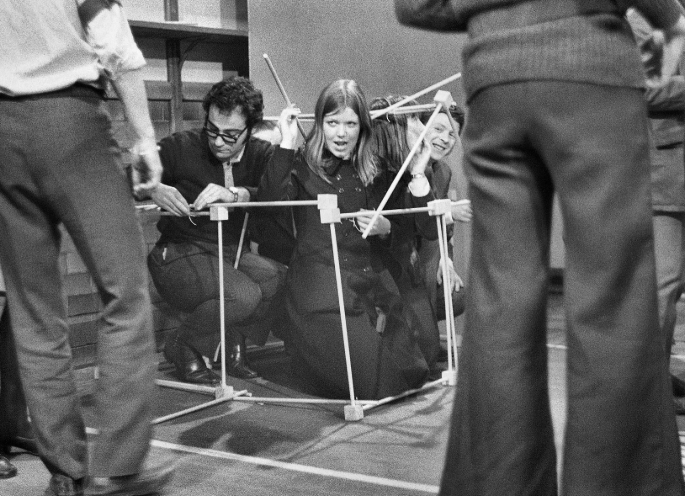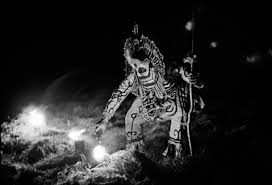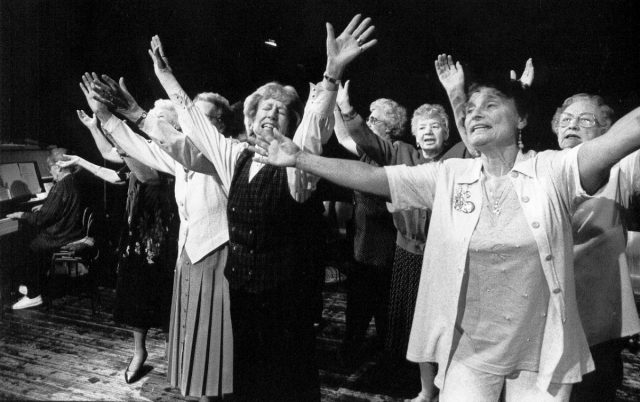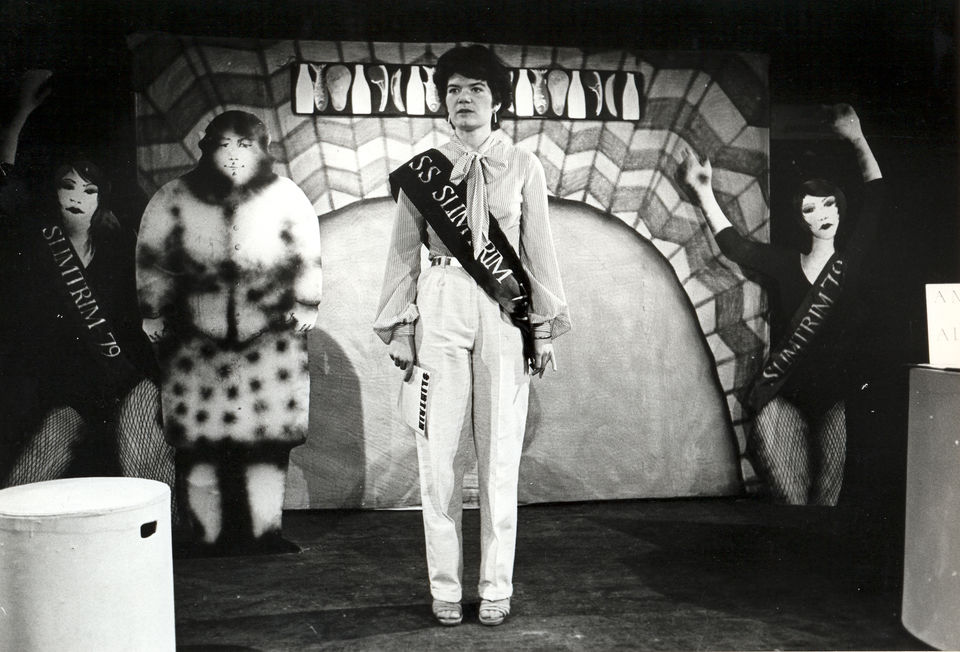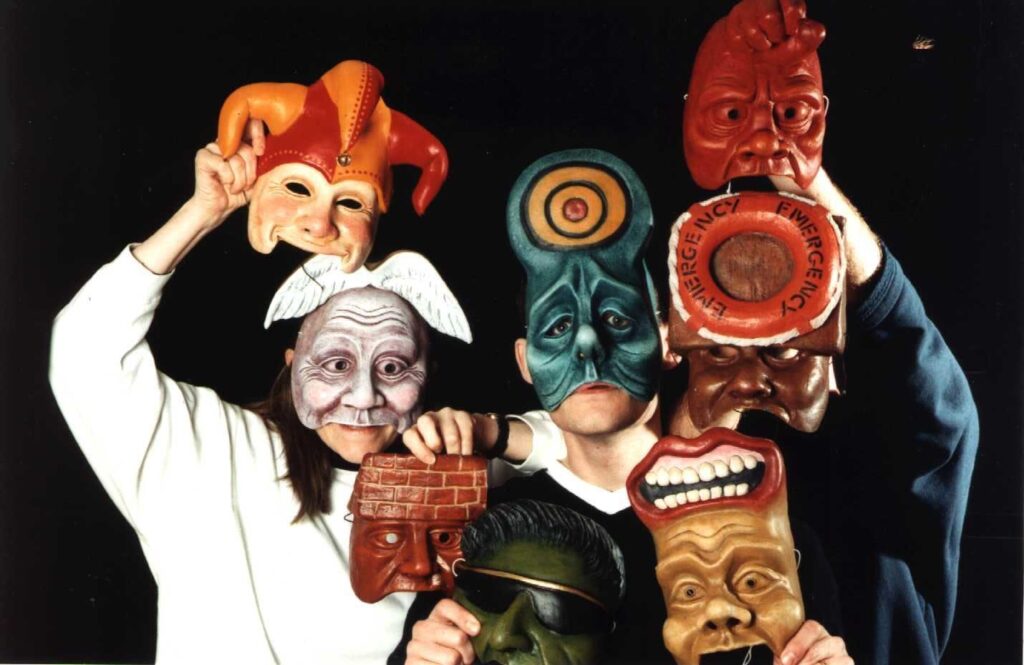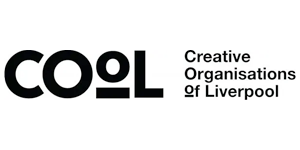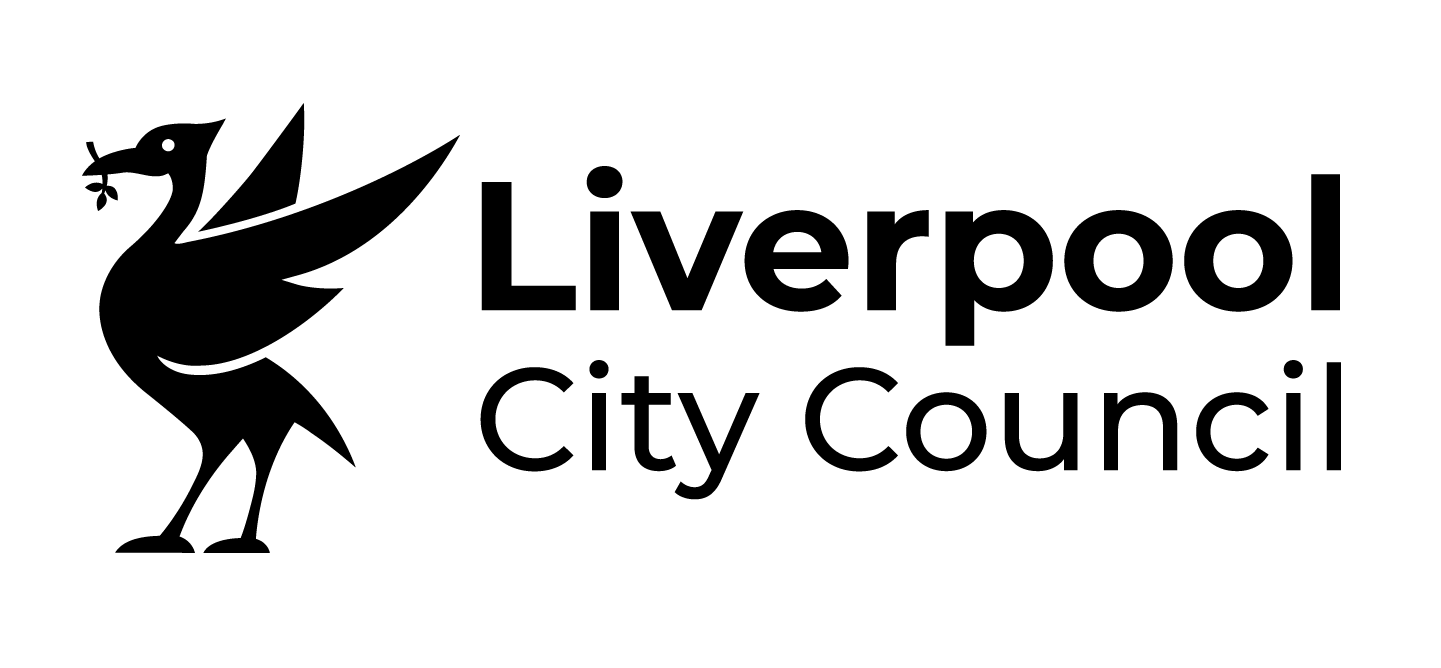The Participatory Theatre Timeline charts the development of Participatory Theatre in the UK from the 1960s to the present.
It describes the different theatre/art forms that have been the building blocks for current practice. These entries offer a snapshot description, historical and present day examples and links for further reading. Its purpose is to provide an easy access overview of the important history of this work, in the belief that if we are informed by our past we make better work in the present; that if we understand our history and our roots we can situate ourselves as part of a powerful movement that makes us stronger in vulnerable and difficult times.
It is hoped that the Timeline will be of use to students and practitioners of Participatory Theatre and will inspire them to dig deeper and find out more.
Click on the title/image of each entry to see more information and access free resources. If you feel something important is missing from the timeline, please get in touch.
Participatory Theatre Timeline

Social Documentary Theatre
In the mid-1960s Peter Cheeseman pioneered a new form of Social Documentary at the Victoria Theatre in Stoke that used verbatim theatre techniques to tell stories of real people’s lives and experiences in their own words. These stories were woven together with songs and factual information and were highly entertaining, engaging large audiences who were often not traditional theatre-goers. Mostly they were created and performed by professional theatre artists but in some instances local people performed alongside trained actors, and local stories were always at the heart of the work. Documentary theatre and verbatim techniques are a staple of today’s participatory theatre performance. Companies like Ice and Fire add a contemporary twist, and use the techniques to tell the stories of communities that otherwise often go unheard.
Theatre In Education
Theatre in Education (TIE) was born at The Belgrade Theatre, Coventry and by the end of the 1960s was a flourishing movement across the UK. It involved small companies of professional actors in creating age-specific performances that tackled historical or social topics relevant to children’s learning. Often the performances were interactive, engaging the children directly in the action and/or in workshops surrounding the piece. The movement was originally led by regional reps and later by small TIE companies like M6, who are one of the few still continuing today. TIE was an important building block for participatory theatre in that it used drama to explore issues of importance to its audiences, saw theatre as a tool for development and directly involved audience members as active participants in the drama.
Experimental Theatre
Immersed in a radical social and political climate, a new wave of artists and theatre makers tired of convention began to experiment with theatrical form. They broke down the fourth wall, performed in non-traditional spaces, moved away from naturalism, created work collaboratively, experimented with audience participation, made multi-disciplinary performance and often told stories that hadn’t been seen on theatre stages before. Though radical at the time, these approaches have been so influential that they are considered the norm in participatory theatre performance today. Contemporary companies like Invisible Flock build on this experimental legacy and continue to break new ground in participatory theatre form, making what they call ‘interactive art’, operating at the cutting edge of art and technology.
Community Arts
Community Arts began in the late 1960s and became a vibrant movement throughout the following decade. Based on principles of community empowerment and cultural democracy it connected art directly with community activism and social action. For some it was about making professional art more accessible, but for many it was about enabling those who had not previously had access to the arts to make their own art. As such it was the main forerunner of participatory theatre today. The Blackie in Liverpool was the UKs first Community Arts Centre, closely followed by many others. They ran workshops that taught arts skills, and festivals that showcased arts work (including performance) that celebrated the cultures and creativity of their local communities. Organisations like Studio 3 Arts continue the tradition today: they are firmly embedded in their community and maintain the connection between community arts and social action.
The Spectacle
Welfare State International are perhaps the best known innovators of the spectacle: large scale community celebrations that involved elements of ritual, procession, music and story telling. Artists and theatre makers worked with communities to create one-off events that were usually rooted in the community’s history, mythology and/or identity. They were colourful and high impact, using puppets, lanterns, eye catching costumes and oversized props that the community groups were involved in making. Their influence on participatory theatre today can be seen in the celebrations, parades and large-scale, short term engagements orchestrated by multi-arts companies, and in the site-specific participatory projects of organisations like Big Telly.
Youth Theatre
Many regional reps and mainstream theatres established Youth Theatres during the 1970s, and in some communities where there wasn’t a theatre volunteers set up Youth Theatres themselves – Burnley Youth Theatre, for instance was one of these and is still thriving after 45 years. The focus was to provide exciting creative opportunities for young people and to help train the next cohort of theatre professionals. The Youth Theatres provided a way in to the industry for many who would not have had access to drama school, and built confidence for thousands of others. The traditional format was theatre skills development followed by rehearsal for performance. Often plays were specially commissioned for the young people, and within a decade there were regular national festivals and the National Association of Youth Theatres was established. The Youth Theatre movement has inspired much of today’s youth focussed and adult participatory theatre with organisations like 20 Stories High offering a contemporary twist on the model.
Community Theatre
Throughout the 1970s Community Theatre Companies were active throughout the UK, with the movement growing from only 5 companies in 1970 to more than 70 by the early 1980s. They were mostly based in small geographical communities (villages or council estates) and their main aim was to make theatre available to those who might not otherwise have access. Participation took two main forms: artists participating more in the lives of their local communities, and the local community participating more in the making of art. Often the companies were led by community engagement and community development principles and became actively involved in local campaigning. The community musical was pioneered in Scotland by Craigmillar Festival Society – shows tackled social and political issues of the day, embedding social commentary in popular entertaining theatre. Companies like ACTA continue to uphold the core values of community theatre today, making exciting and important theatre of, with and for their community.
Popular Theatre
Companies like 7:84 / 7:84 Scotland created radical new theatre using popular forms of entertainment to tackle social and political issues. They toured to communities (often nationally) playing in non-traditional venues, and trying to reach a non-theatre going public. Sometimes audience participation was incorporated and often workshops and post-show discussions were held after the show. These explored the arising issues in more depth and sometimes enabled the companies to develop content for revivals or for new plays. Companies were keen to explore how artists could participate more fully in their communities. Common Wealth continues this tradition today, making exciting political theatre that speaks of pressing current issues and tours into the hearts of communities. The approach of using popular forms of entertainment to tackle challenging issues has influenced much of our contemporary participatory theatre performance.
Reminiscence Theatre
Reminiscence Theatre was a totally new form that drew on the stories and memories of older people to create documentary style performances. Sometimes a professional piece would be developed through a Reminiscence process and then tour for older audiences. Sometimes a residency would lead to a one-off performance on site. In this form, older people work with a professional creative team as co-creators, and occasionally co-performers, to make work that speaks of a particular time, place or experience. Pioneered by Pam Schweitzer and Age Exchange, this became the basis for most arts work with older people for the next three decades and has had a huge influence on participatory theatre for and with older people. Age Exchange are still going strong today, with newer companies like Re-live building on the legacy.
Political Theatre
Growing out of the civil and human rights activism of the 1970s a new movement of political theatre companies emerged that aimed to tackle single issues through theatre, and find a voice for minority or marginalised groups within the arts world. LGBT, Women’s, Disability and BAME rights were key in the development of political issue based theatre. Companies like Gay Sweatshop, Spare Tyre, Graeae and Temba pioneered work in this field. They were followed in the 1980s by Lung Ha and others, leading the way in theatre with and for adults with learning disabilities. In addition, there was an explosion of socialist theatre companies, like Red Ladder, focussed on making work for working class communities often in tandem with the unions. A handful of these radical organisations continue today, and the styles they pioneered, the stories they told and the political underpinning of their practice have all influenced contemporary participatory theatre.
Community Plays
Originated by Ann Jellicoe and the Colway Theatre Trust (CTT), the community play is a specially commissioned piece that tells an often historical story from a community. In the CTT model a team of professional theatre makers would move into a village for a residency and work across the whole community to realise a large-scale production. Performance, making, front of house and all other aspects of the production were undertaken by hundreds of local people, supported by the professional team. The distinction between the community play and the community theatre of the 1970s was that community plays were usually not political: Jellicoe and her followers believed that politics were divisive and they sought the “humanising effect” of theatre when bringing people together across social and economic divides. CTT continues to make Community Plays as Claque Theatre. National Theatre Scotland gave a contemporary take for their launch in 2006, staging ten plays on the theme of home for and with communities across the country.
Theatre of the Oppressed
Developed in Brazil by Augusto Boal in the 1970s Theatre of the Oppressed(TO) became popular internationally in the ‘80s and is now a staple of British participatory theatre practice. The ideas of theatre as a rehearsal for change, of the ‘spectactor’ (an audience member who becomes involved in and changes the outcome of the drama), the exploration of psychological, social and political oppression through theatre games, all originate in TO. Later in his career Boal went on to develop Legislative Theatre, showing how theatre can be used to directly influence and inform political change. Companies like Cardboard Citizens pioneered TO in the UK, with their Artistic Director translating several of Boal’s books into English. They are still going strong and new companies like Active Enquiry continue to find real value in the model.
Participatory Theatre
As funding for community arts organisations and community theatre companies dried up during the 1980s freelance theatre facilitators became more common. Working directly with individual community groups or through specific one-off projects these theatre artists would teach theatre skills, facilitate an exploration of local stories, collective experiences or social issues, then lead a devising process. This enabled the groups to make their own piece of theatre to be performed without any involvement from professional actors. The term participatory theatre/arts was used by some to distance themselves from the negative connotations that had come to be associated with the politically driven community theatre, and the contentious debates around quality which characterised the community arts movement throughout the 1980s. This can be seen as the beginning of the de-politicisation of community arts. An interesting new development in participatory practice is led by the Arts Council of England Creative People and Places Projects which aim to promote arts engagement across the country.
Theatre with Communities of Experience
Throughout the 1990s theatre was increasingly used with ‘communities of experience’ as well as geographical communities sometimes to tell stories that often went unheard, but increasingly to offer personal development outcomes for participants. Companies began to specialise in working with particular groups: Geese Theatre in Birmingham, for instance led the field in working within the prison and probation services. Companies started to partner with social sector organisations to help them achieve the concrete social outcomes that were for the first time being acknowledged through reports about impact and through new funding streams established as part of New Labour’s approach to social inclusion. This marked a shift from the radical politics community arts had grown out of, to a more liberal approach to change. Some practitioners worried that this put the blame for social ills on individuals rather than the political system, and papered over the cracks of the problems inherent in many of the marginalised communities with which they worked.
Cross-community Arts
Work across communities (intergenerational or between different socio-economic groups) had taken place since the beginning of the community arts movement, and the benefits had long been understood by arts and community practitioners. As the recognition of the instrumental value of the arts became more widely accepted in the 1990s though, there was a significant increase in the ways in which theatre was used for community cohesion and to help with healing fractured communities. Some of the most important work happened in Northern Ireland, with projects bringing together participants from Catholic and Protestant communities as the peace process was in development. Unlike Jellicoe’s Community Plays which glossed over social and political differences, organisations like Community Arts Forum used theatre to explore difference and find common ground in looking to a future of peace. Organisations like Partisan Productions continue the work today.
Applied Theatre
This term came into common use in the early 2000s to describe the many types of theatre that worked in community contexts and had a social aim. It’s an umbrella term that encompasses theatre with communities of interest and experience, cross-community theatre, activist arts, co-creation, relational aesthetics, community cultural development and all other participatory theatre with a social application. The term has remained popular in academic circles and is used in much of the literature describing this kind of practice, but hasn’t really taken hold at grass roots where the work is more often called participatory theatre, collaborative practice or community theatre.
Theatre Outreach
While mainstream theatres led the way with Theatre in Education and Youth Theatre in the 1970s funding cuts through the 80s and 90s, together with shifting artistic policies led to a significant reduction in community engagement. The increased importance placed by funders on community engagement in the early 21st century though has seen a resurgence in outreach work from the mainstream theatres. Sometimes it’s a tool for audience development (with post-show discussions or pre and post show workshops), sometimes as part of a schools education programme (exploring texts in the curriculum) and in some instances, such as Brighton Dome or National Theatre Wales, as a way of ensuring that the theatre represents the voices and interests of all the communities they serve, through participatory and engagement programmes with creative and social agendas.
Theatre for Social Change
As its name suggests, Theatre for Social Change (TFSC) specifically intends to contribute to social/political change. It grows out of the communities it serves (either communities of geography or experience) and involves them ethically in shaping, and usually performing, the work. It places equal emphasis on the creative and the social – so theatre makers work closely with social sector organisations to try and ensure strategic impact. TFSC seeks to raise awareness of the social and political issues impacting communities, and to draw attention to the structures and policies that underpin people’s lived experience, with an aim of provoking positive action. Collective Encounters was one of the first companies in the UK to adopt this term to describe their practice, but many others embed it in their approach.
Arts for Health
While the term Theatre in Health Education was coined in the 1980s, the field of Arts for Health exploded during the 2000s driven by the new health and wellbeing agenda. Participatory theatre in this context is used to achieve the Five Ways to Wellbeing: connect, be active, take notice, keep learning and give. It spans mental health settings, hospitals and care homes; is offered in some places ‘on prescription’ and in others to help people ‘live well with dementia’. Primarily theatre is used as a workshop process, but sometimes performances are created that raise awareness of health issues or articulate the patients’ voice to policy makers and health care professionals. Valley and Vale and Entelechy Arts illustrate the breath of theatre-based arts for health practice, and networks in Wales, Scotland, and England provide case studies showing the extent of the work.
Creative Ageing
This is an umbrella term for participatory arts work with older people and describes a broad range of practices. While this work has been happening since the beginning of the community arts movement, the term has come into common use in the last decade. Referring to work led by professional artists with participants over 55 years of age, it is often underpinned by a health and wellbeing agenda. It includes everything from one-off arts workshops to reminiscence theatre projects, and can also encompass more radical theatre that aims to celebrate the contribution older people make to society or give voice to their concerns. Festivals like Luminate in Scotland, Gwanwyn in Wales, Age of Creativeity in England and Bealtine in Ireland showcase the full range of this activity.



